Geography
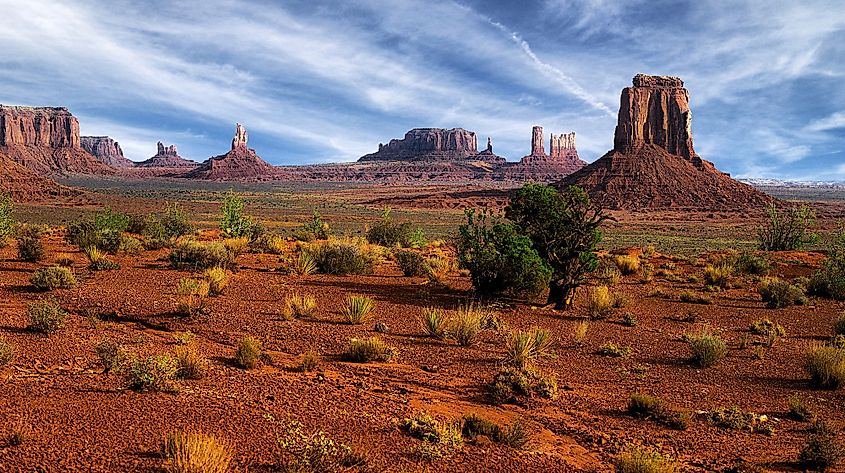
Death Valley lies in the Great Basin to the east of the Sierra Nevada Mountains, in the northern part of the Mojave Desert. The Death Valley constitutes a major part of the Death Valley National Park as well as the Mojave and Colorado Deserts Biosphere Reserve. Death Valley runs roughly in the north-south direction and has a length of about 225km and a maximum width between 8 to 24km. It is bounded by the Grapevine, Funeral, and the Black Mountains of the Amargosa Range on the east and the Panamint and the Cottonwood Mountains of the Panamint Range on the west. Located in the Panamint Range is the Telescope Peak, which rises to an elevation of 3,366m and is the highest point in the Death Valley National Park. The Valley features a diverse landscape that includes mountain peaks, canyons, sand dunes, salt flats, badlands, and volcanic craters.
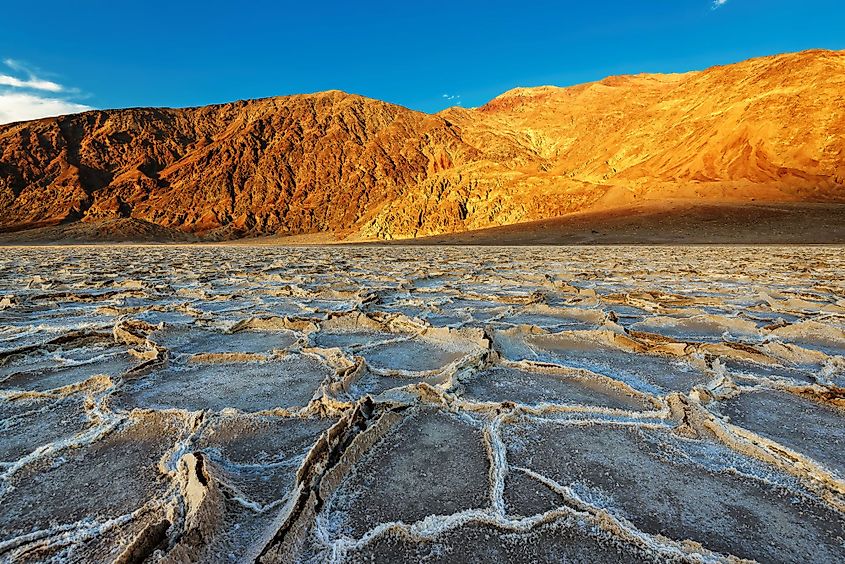
It is estimated that about 1,425 sq. km of the floor of the valley is located below sea level. There are also many salt pans in the Death Valley which are considered to be the lowest land areas in the Americas. Located in the heart of the Death Valley National Park is an endorheic basin known as the Badwater Basin. This basin is situated at a depth of 86m below sea level and is the lowest point in the United States and the entire North American continent.
Geology
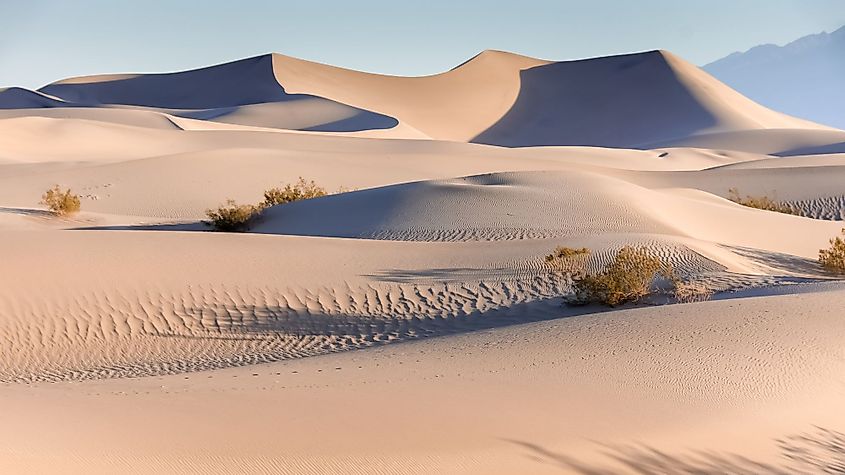
The Death Valley is a rift valley or a graben that has been formed due to the sinking of a huge expanse of rock located between major block-faulted mountains running parallelly in the east and west. Large aprons of alluvial fans lie against these mountains. The alluvial sediments that have been deposited in the Death Valley through several years consist of sands and gravels that were removed by flash floods from the surrounding mountains.
The valley is located at the southern end of a geological trough known as the Walker Lane and is in turn divided by a right-lateral fault system into the Furnace Creek Fault and the Death Valley Fault. The Death Valley Fault is joined by the eastern part of the left lateral Garlock Fault. Both the Amargosa River and the Furnace Creek flows through a part of the Death Valley and disappears into the sands of the valley floor. Geologists believe that during the Wisconsin Glacial Stage of the Pleistocene Epoch, an inland lake known as Lake Manly was formed in the Death Valley. This lake had a length of about 160km and a depth of about 180m. It is also believed that about 2,000 to 5,000 years ago, a shallow lake occupied portions of the valley floor. As the area turned into a desert, the waters of the lake evaporated, leaving behind the valley’s present salt pan.
Climate
According to the Köppen climate classification, the Death Valley experiences a subtropical hot desert climate with long and extremely hot summers, short and mild winters, and very little rainfall.
Death Valley is considered the hottest and driest place on Earth. On July 10, 1913, the hottest air temperature of 56.7°C was recorded in the valley’s Furnace Creek. However, the accuracy of this reading was questioned by some meteorologists due to certain irregularities. Nevertheless, on August 16, 2020, the highest recorded temperature in Death Valley’s Furnace Creek was 54.4°C. The lowest temperature recorded in the Death Valley on January 2, 1913, was -9°C.
Due to the location of the Death Valley in the rain shadow area of the four major mountain ranges, the valley is extremely dry. The average annual precipitation in the Death Valley is just 2.36 inches while Furnace Creek receives an average precipitation of just 1.58 inches per year. In 2005, the Death Valley received about four times its average annual precipitation. During this time, the lowest spot in the valley became filled with a wide, shallow lake. But due to the extreme heat and aridity, the ephemeral lake began to evaporate immediately.
Ecology
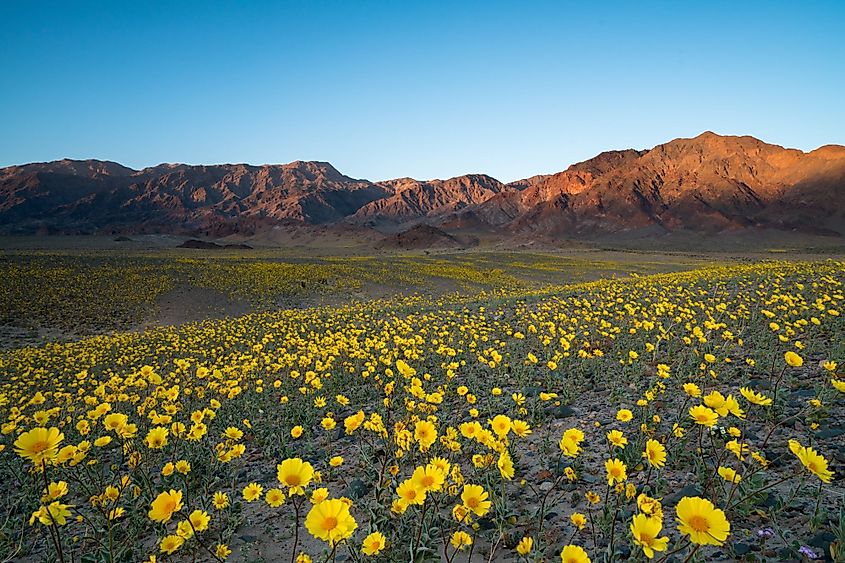
Despite the hot and arid climate, the Death Valley includes a rich diversity of flora and fauna. Different types of plants like salt grass, salt-tolerant pickleweed, creosote bush, desert holly, mesquite, Joshua tree, pinyon-juniper, black brush, bristlecone pine, and sub-alpine limber pine woodlands are found here. A great variety of desert wildflowers blossoms after the spring rains.
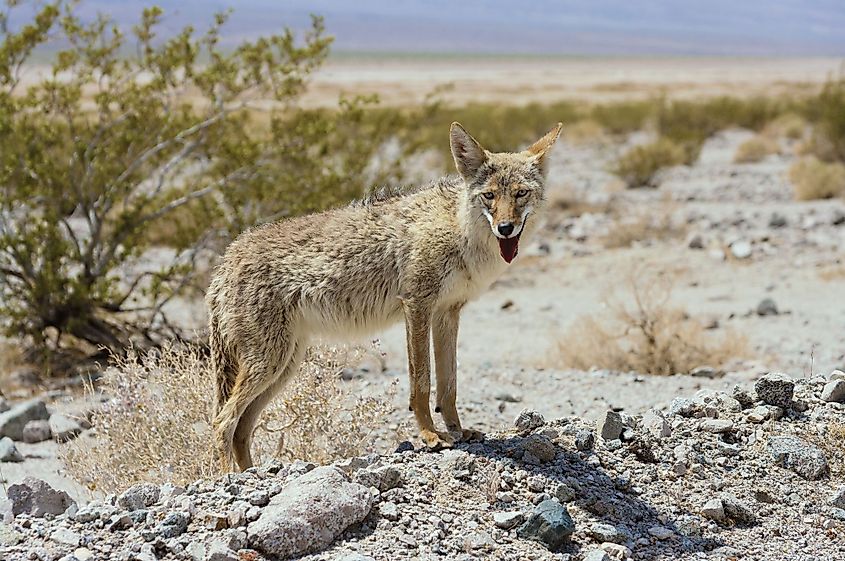
Some of the notable faunal species that are found here include rabbits, kangaroo rats, antelope ground squirrels, desert woodrats, wild burros, bighorn sheep, coyotes, bobcats, and mountain lions. Birds like red-tailed hawks and roadrunner have also been reported. Scorpions, lizards, and snakes are also found here. There are over 600 springs and ponds in the Death Valley. Several species of the Desert Valley pupfish have been recorded from Salt Creek. Located on the western edge of the Death Valley Monument is Darwin Falls. The water falls for about 30m into a large pond that is surrounded by cottonwood and willow trees. More than 80 avian species have also been observed around the pond.
Brief History
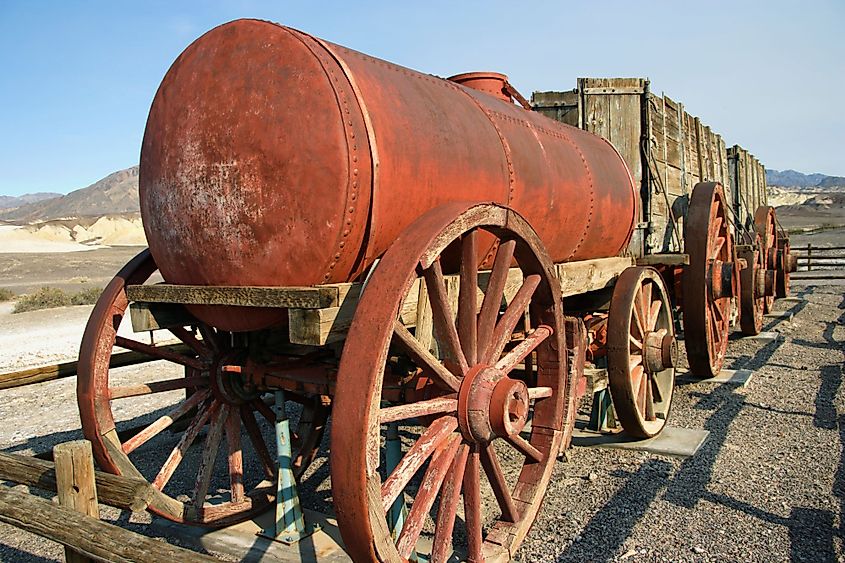
Several artifacts found in the Death Valley have revealed that the valley was occupied by people about 9,000 years ago. The harsh desert environment of the Death Valley has been home to the Timbisha Shoshone Native Americans, who referred to the valley as “tümpisa” which meant “rock paint” in their native language. The valley was given its modern name in 1849 by the gold prospectors who came during the California Gold Rush. During the 1850s, minerals like gold and silver were extracted in the valley. After the discovery of borax in the 1880s, mule-drawn wagons were used to transport the borax out of the Death Valley.
On February 11, 1933, the area was proclaimed as a National Monument by the then US President Herbert Hoover. On October 24, 1994, the Death Valley National Monument was redesignated as the Death Valley National Park. During this time, the geographical boundaries of the park were expanded to also include the Saline and Eureka Valleys.



 Users Today : 262
Users Today : 262 Total views : 666848
Total views : 666848